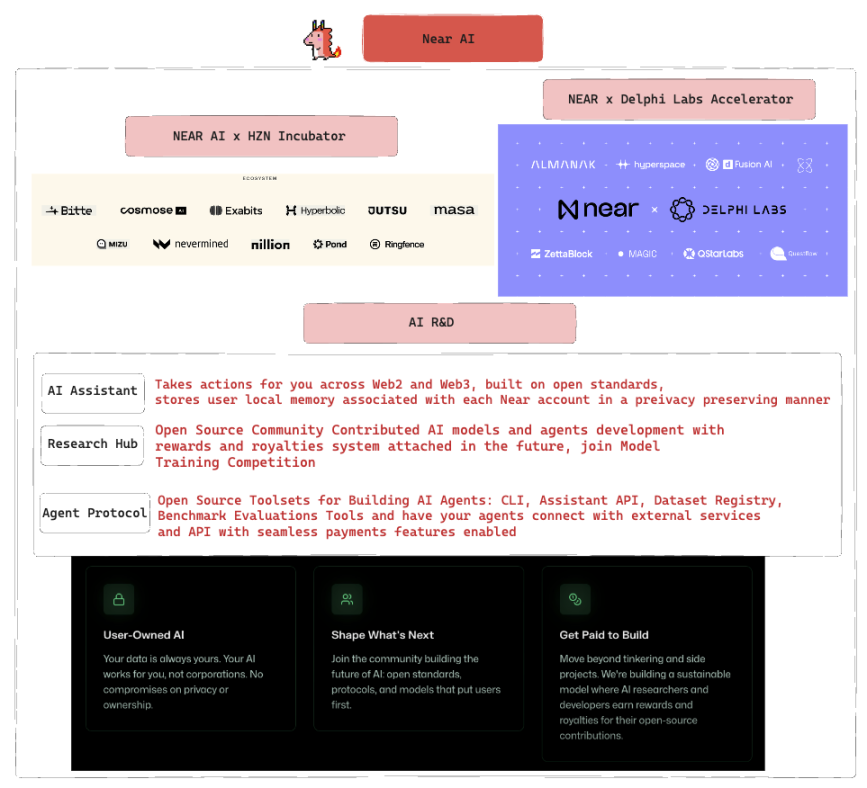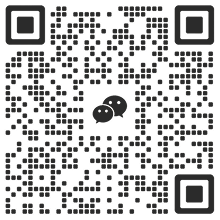Author: IOSG Ventures
Near.ai → NEAR Protocol → NEAR AI
At the end of 2017, there was an AI paper that shocked the academic world—NLP & AI Revolution. At that time, 4 of the 6 authors of the paper started AI-related companies (later joined openAI), and the other one was Illia, the founder of NEAR AI. When we saw this paper, we started to get in touch with Illia. I first went to the Near office in 2018. At that time, it was in an underground shared space in San Francisco. A group of engineers gathered together to do a workshop. We talked for a long time with the founding team from Ukraine, helped Illia apply for his visa to China, and helped them complete the preparation of more than 4 offline developer events within 3 months.
As a 7-year-old crypto OG project, the two founders of NEAR are well-known in the field of artificial intelligence, including Illia Polosukhin, co-creator of the Transformers architecture, and Alexander Skidanov, a master in the field of MemSQL. Their original idea was to train models through computer science students around the world and realize the use of program synthesis. Therefore, NEAR was originally established as "Near.ai" with a belief: they can not only make research breakthroughs in the field of program synthesis, but also launch a revolutionary product driven by this technology. (Interest: IOSG participated in Near's early round of investment in 2018)

However, in 2017, machine learning, especially natural language processing (NLP), was far less mature than it is today, and there were still huge challenges in truly realizing program synthesis and solving practical problems. Therefore, their consultants suggested that they try to apply program synthesis technology to solve the problem of developers programming verifiable smart contracts on Ethereum. However, Ethereum at that time still had many limitations, especially in terms of the availability and scalability of microtransactions, and no blockchain or traditional payment system could meet the needs.
Therefore, NEAR spent six years building a highly scalable and user-friendly blockchain, a blockchain that can adapt to micro-transaction needs, provide a familiar onboarding process, and solve a series of problems such as cold start, key management, and account availability. But this also caused the market to shift its positioning from artificial intelligence to a Layer 1 blockchain with unclear use cases. With the emergence of more and more cryptocurrency and artificial intelligence innovations, including computing markets, inference networks, and the emergence of numerous AI agents, as well as the outstanding price performance of high-market-cap AI tokens such as TAO and WLD, people seem to have forgotten that NEAR is a pioneer in this field.
After seven years of development, with the improvement of NEAR infrastructure, NEAR has an ecosystem of blockchains and application builders that are scalable, easy to use and develop. Illia and Alexander can finally refocus NEAR's goals on the original vision, that is, to make NEAR AI the center of user-owned artificial intelligence in the next stage of development. At the IOSG OFR Dubai event in April this year, Illia shared his views on "Why AI needs to be open" and expressed his determination to build NEAR into a leading ecosystem for the next generation of artificial intelligence research and applications.
NEAR is an AI ecosystem built on the Web 3 track, driven by the vision of user ownership of AI. Compared to the popular model of centralized AI controlled by large technology companies, NEAR believes that user-owned AI provides a truly better choice for developers and users. NEAR hopes to maximize the benefits of AI for humanity and the community through Web3 and the entire NEAR ecosystem, while minimizing the potential risks of centralized AI.
Considering that the Crypto x AI field is still in its early stages, NEAR's strategy is to promote the development of the entire Web 3 AI ecosystem from a more non-profit perspective, whether through incubators, accelerators, investments, building its own open source AI research centers and tools, or using competitions to cultivate community-driven AI development methods. Its strategic goal is to achieve the vision that the results of AI can be truly shared by the community. As for the improvement of its token economic benefits, it is not currently NEAR's top priority.
This article will focus on NEAR’s re-positioning in the Crypto x AI track to help everyone better understand its positioning in the Web 3 AI ecosystem.

Source: IOSG Ventures
NEAR Foundation Incubator
In line with this theme, the Near Foundation announced the launch of the NEAR AI x HZN incubator in May, and also established an investment department focused on AI projects and a research and development laboratory.

The Near Foundation has selected 11 projects to support, and participating projects in the incubator will receive benefits during the initial 12 weeks of the program (June to August 2024) and subsequent phases (until May 2025), including: access to NEAR’s network of AI experts, dedicated technical and token issuance support, computing resources, and funding opportunities.
These projects cover multiple aspects of the AI technology stack, including data, models, computing, and reasoning, and aim to provide AI users and developers with a securely accessible and decentralized open AI solution, breaking the monopoly of centralized AI service providers.
Some highlights of the selected incubation projects include:
- Hyperbolic: An open-access AI cloud platform that hosts the latest open source AI models, including Llama 3.1 405B.
- Mizu: Launched its beta data pre-processing platform, attracting 20,000 users in the first week.
- Pond: Launched its first Graph Neural Network (GNN)-based model, using on-chain data for wallet prediction and achieved a 20% prediction success rate.

NEAR x Delphi Labs Accelerator
Due to the good results of the early incubation, NEAR further cooperated with Delphi Labs (another research and venture capital company active in the fields of Crypto and AI) to jointly announce the first joint AI accelerator program. This is a strategic move to support and quickly expand projects with high potential at the intersection of AI and Web3. The program started on October 15 and will last until early December.
Selected teams will benefit from comprehensive support, including technical mentorship, funding opportunities, and access to NEAR and Delphi’s network of experts. In addition, each team will receive a $100,000 investment from the NEAR Foundation and up to $250,000 in potential investment from Delphi Labs for further incubation or acceleration upon completion of the program. The program will be showcased at an investor-focused Delphi Labs demo day in mid-December. Each selected project will also receive $50,000 worth of computing credits from Aethir, the accelerator program’s advanced computing partner. These computing resources will ensure that each team has the computing power needed to develop and deploy resource-intensive AI models, allowing them to focus on project building without being constrained by infrastructure limitations.

Source: Near AI Blog
NEAR AI R&D
In addition to funding and incubating other projects, NEAR itself is also conducting a lot of AI research and officially launched Near AI at its REDACTED event on November 8, positioning itself as an AI blockchain and launching three important developments.
NEAR AI Assistant
Near AI Assistant is a chatbot-like assistant that can answer general questions such as “What is IOSG Ventures?” and “What is Near AI?” The AI assistant provides each user with a local memory that is associated with each NEAR account, remembering information during a user’s conversation with it and leveraging that memory when interacting with different agents on its platform.
More importantly, it enables non-technical creators and developers to easily do many crypto operations, especially those related to cryptocurrency. Users can prompt the AI assistant to complete operations with just a few words, such as creating a Memecoin image for the user, generating a website for the Memecoin, and launching it on the Pump.Fun platform to realize AI agent coin issuance.

Access the Near AI assistant at chat.near.ai (currently in alpha)
An open source toolset for building AI agents
NEAR also released an Assistant API toolkit to help users build, measure, and deploy AI agents and integrate them into specific applications.
Currently, more than 60 agents have been uploaded to the NEAR Agents Hub, each focusing on different use cases for Web2 and Web3, such as web scraping, token exchange agent, YouTube transcription agent, etc. Each agent can connect to and call other uploaded AI agents to perform tasks.
In future updates, agents on NearAI will even be able to interact with external services and APIs for transactions.
Access community-built AI research and resources for cutting-edge model development
NEAR believes that open source contributions are the key to enabling users to own AI. To achieve this goal, NEAR launched the AI Research Hub, which brings together all the tools and infrastructure needed for researchers to build open source AI, including datasets, models, reasoning, decentralized storage and computing. An important feature of these open source tools is the benchmarking tool, which enables developers to compare different implementations of agents and models with the same functions, helping users to better adjust and improve their agent and model performance indicators over time.
To ensure the development of state-of-the-art models (SOTA), NEAR AI Research Hub also uses competitions to continuously optimize models. Currently, NEAR is running an ongoing Model Training Series competition to encourage the community to gradually train larger AI models (from 500 million parameters to 1.4 trillion parameters) with perplexity as the benchmark. These models use the FineWeb dataset and are trained using a trusted execution environment (TEE) and GPU in the NEAR protocol core node to ensure that the models are both privacy-preserving and monetizable.

Source: app.near.ai/competitions
Obviously, in order to capture the value created by open source contributors, they need to be properly rewarded and compensated. NEAR is already planning a future roadmap to establish a reward and copyright distribution system for competitions and model use.
Conclusion
In NEAR's vision of user-owned AI, NEAR welcomes everyone to contribute, and everyone's contribution will be valued and rewarded. Code contributions are not the only way to help the community. Answering questions, helping others, and improving documentation are also of great value.
As NEAR continues to expand in the AI space, NEAR has the potential to become the preferred platform for decentralized AI development, paving the way for the next generation of AI-based decentralized applications (dApps).
In fact, we have already seen some AI-related dApps built on NEAR. For example, a protocol called Bitte is working on decentralized proxy discovery, and its proxy plug-in use cases include NFT minting, cross-chain transactions, etc.
Obviously, there are many innovations in the NEAR ecosystem that go beyond AI. To explore more projects in the ecosystem, you can refer to a tweet shared by Marcus:

https://x.com/marcus_NEAR/status/1862142775304597635
At present, there is no clear connection between NEAR's AI strategy and how the NEAR token and blockchain are combined, and how to accumulate value for the NEAR token. However, in the future, Web3 dApps developed based on the NEAR AI platform may be implemented in the NEAR ecosystem. NEAR tokens may be used to reward and incentivize users who participate in model training competitions, or as a means of payment for using the platform's proxy services. In the future, when users need to call proxy services on the NEAR platform, they may need to pay NEAR tokens as usage fees.
In any case, this AI strategy will greatly encourage more users to embrace decentralized Web 3 AI, taking an important step for users to fully control their own AI future.
















